How to engage and convert a user if he has not left an email

In a previous article , we wrote about trigger email marketing. We sorted out its advantages and effectiveness at the stages of the sales funnel, cited 4 cases.
It is an excellent tool in terms of efficiency, but it has one drawback or rather a feature. Without knowing the user's address, you won’t send any letter to him. Because of what, trigger email is effective only at the stages of sale and re-sale, when you already have an address. What alternatives to email can be in this case?
Online trigger chat and pop-up trigger will help us convert the audience without email addresses!
These are great tools for engaging and converting users on the site. Unfortunately, due to some unscrupulous marketers, the stereotype has gone that pop-ups are something very bad (as if the bounce rate is increasing, the audience is annoyed, etc.). First of all, because it annoys users. Remember, you probably heard about this too. But many experts say the opposite - the presence of the “right” window (we will discuss what “right” means below) does not affect the failure rate, but increases the conversion to the target action .
For example, Econsultancy research shows that pop-ups improve email collection by up to 400%. How do you like it?
Features of trigger chat and pop-up (unlike email):
- No need to know the user's email address (as discussed above);
- Work only if the user is on the site;
- Communication through an online messenger looks more personalized and is perceived as “live”;
- Effective at many stages of a sales funnel;

- Collect customer emails (after which you can use several tools at different stages of involvement); Here is an example of one of our windows:
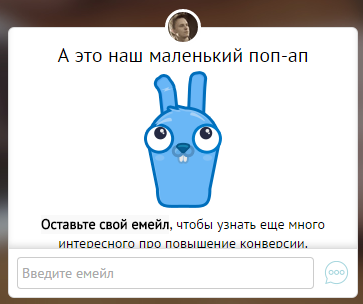
- High interactivity (at the right time, in the right place, with relevant information);
- Opportunity for the operator to play any scenario “on the spot”, knowing what action the user performed upon receiving a trigger message;
- Allow you to collect feedback.

If the presence of the “correct” pop-up does not affect the failure rate, then its absence significantly reduces the conversion to leads.
It's about not liking to get up in the morning. Most simply do not like morning because it doesn’t get enough sleep, but the value from an early upsurge (work, productivity, profit) is much higher than this reluctance. In the end, we wake up in the morning. If the value is low, then closing the pop-up window (clicking on the cross) is as simple as setting the morning alarm.
What you should pay attention to to create an effective pop-up:
1. Display time (for example, if a user has just visited the site and immediately saw a large pop-up window, this will not lead to anything good);
2. Display conditions (the more information you collect about the actions of users on the site, the more accurately adjust the display conditions). Showing pop-ups mindlessly to everyone is really harmful.
For example, a user has read 2 articles about traveling to Italy. It is likely that he is planning a purchase. For this category of users, you can configure pop-up with a proposal to help. 3. The ability to easily close the window (the visitor is nervous if this is difficult). When hovering over a window, a cross or a reject button should always be; 4.

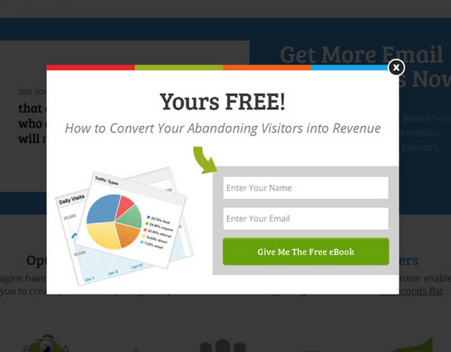
Frequency of occurrence (if I endure the repeated display of the same window at a time, then on the 3rd I’ll rather run away, and you?);
5. Call to action (you should push the user to action, and not just show him some information);
6. The value of the proposal (if you offer what your competitors already offer, and there will be no uniqueness, then why does your client need it?); 7. The amount of information requested. The less information you ask the user, the higher the likelihood that he will leave it (relevant for generating leads, as in the example above - we only ask for an email address, I’ll duplicate the picture); 8. Appearance (the window should be organically integrated into the site design, complement it).
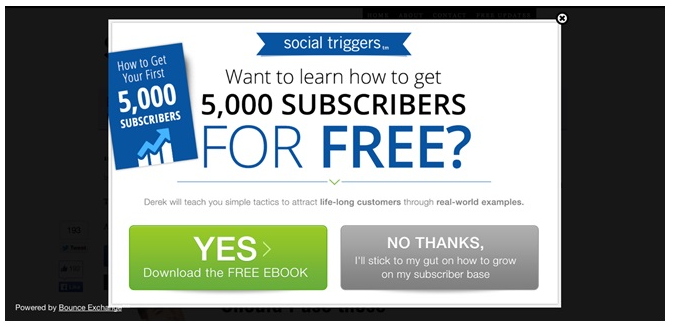

Universal pop-up settings simply do not exist. Everything is individual, so you need to try and test in each case.
Trigger online chat
The approach to engaging in a chat is different from the popup. Here it is less intrusive and allows you to use a message system (for example, involving a message, followed by a greeting, and as the user answered, he is automatically asked for an email). Using automatic chat messages, remember that mindless questions are “how can I help you?” work much worse and rather worsen the user's attitude to the site.
The following parameters are important:
1. Appearance.
When a person watches a site, the chat should be unobtrusive, but noticeable. If the user has responded (write to the chat), then the chat should be free and convenient. In the service we use several chat states (minimized, maximized).
Chat must be organic on the site. Therefore, we have developed a versatile chat design. The minimized state will look great on any site. This is how it looks: 2. Involving inscription. In the example above, the inscription - “I'm here, if that”, is just that inscription that the visitor sees on the site when he has not yet opened the chat. This is a fairly general example, because you can configure these messages depending on the conditions and actions of the user. For example, for readers of Megamind we have another engaging message displayed . Involving inscription should vary depending on the goal and the stage of the funnel. For example, after making a purchase, you can thank the customer and ask to leave a review. 3. Welcome message.

This message is displayed when the user has already opened the chat. Here it is necessary to engage the user in the following. Tell him how soon they will answer him and clarify various points. If it is “not the case”, then he may even want to write or take the necessary action. Need to lure and show value.
In the example below, we used pop-up and chat together, that is, we showed a window, when the user hovers over it, the expanded chat opens. In general, in Carrot Quest, we created a really cool chat integrated with CRM, email service and analytics. Here we wrote several articles that talk about our approach to communications and chat functionality .
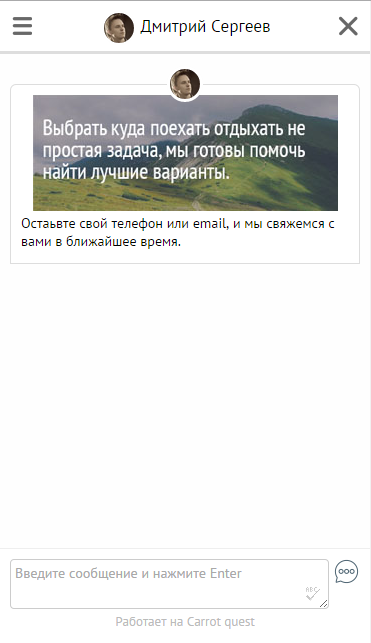
In addition to chat and pop-up, we also provide event analytics (we monitor actions and information about users) and allow us to work with this data (for example, create auto-messages for different segments of users, depending on their actions). The possibilities of pop-ups and chat are seriously increasing with the availability of such data.
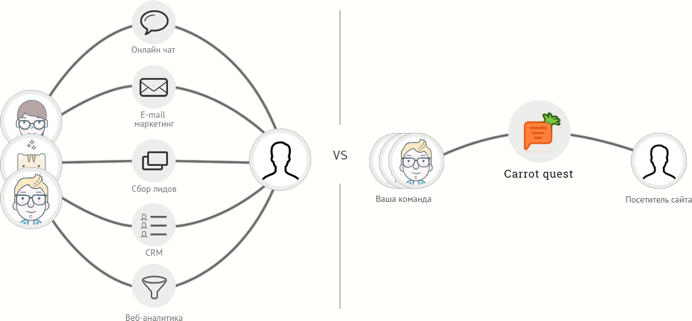
Differences between pop-up and chat in Carrot Quest:
- Chat (minimized state) looks noticeable, but unobtrusive;
- The pop-up window is very easy to configure, just insert a picture and text into the form;
- After pointing the user at pop-up, he will see a detailed chat where he can continue communication (also, you can configure pop-ups without chat);
- You can very finely set the conditions and time of the show (for example, if a user who came from Megamind visited the same page 2 times and did not leave an email, show him pop-up);
- Remember the user. It is enough for him to enter the data only 1 time and they will remain in his card forever. For permanent identification, re-authorization is not required.
- Full analytics on the sent pop-ups and chat;

- We know not only the quantity, but also the specific names, data and actions of those to whom they sent and who answered these windows.
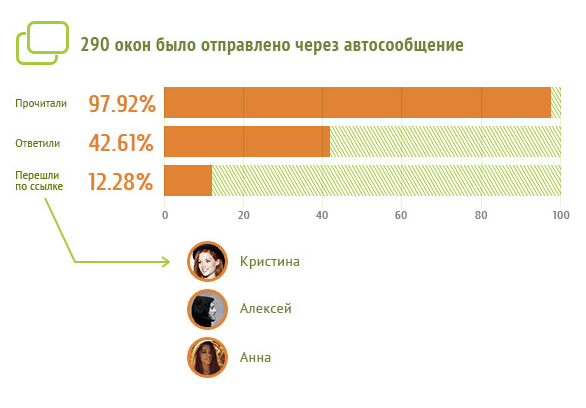
Chat and pop-up can and should be used to engage and convert users. Just in the next article we will talk about how exactly these tools will help at each stage of the funnel.
New and interesting solutions!
Your team from Carrot quest .
